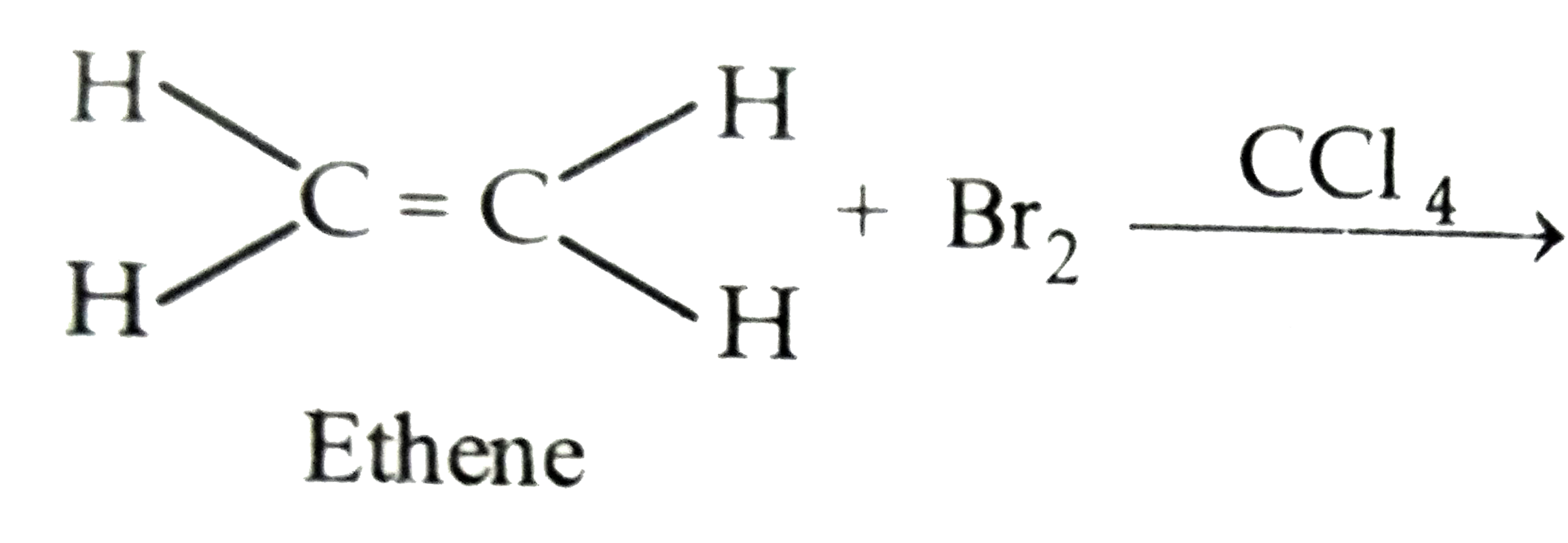Name the following reactions:
(i) C6H5N2+Cl−CuCl/HCl−−−−−−→C6H5Cl+N2
(ii) C6H5N2+Cl−Cu/HCl−−−−→C6H5Cl+N2+Cucl
To solve the question, we need to identify the names of the two reactions provided. Let's analyze each reaction step by step.
Step 1: Analyze the first reaction
The first reaction is:
C6H5N+2Cl−CuCl/HCl→C6H5Cl+N2
1. Identify the reactants: The reactant is benzene diazonium chloride, C6H5N+2Cl−.
2. Identify the reagents: The reagents used are copper(I) chloride (CuCl) and hydrochloric acid (HCl).
3. Identify the products: The products formed are chlorobenzene (C6H5Cl) and nitrogen gas (N2).
4. Name the reaction: This reaction is known as the Sandmeyer reaction. It involves the substitution of the diazonium group with a halogen (in this case, chlorine).
Step 2: Analyze the second reaction
The second reaction is:
C6H5N+2Cl−Cu/HCl→C6H5Cl+N2+CuCl
1. Identify the reactants: The reactant is again benzene diazonium chloride, C6H5N+2Cl−.
2. Identify the reagents: The reagents used are copper (Cu) and hydrochloric acid (HCl).
3. Identify the products: The products formed are chlorobenzene (C6H5Cl), nitrogen gas (N2), and copper(I) chloride (CuCl).
4. Name the reaction: This reaction is known as the Gattermann reaction. It also involves the substitution of the diazonium group with a halogen, but it uses copper metal instead of copper(I) chloride.
Final Answer
(i) Sandmeyer reaction
(ii) Gattermann reaction
The first reaction is:
C6H5N+2Cl−CuCl/HCl→C6H5Cl+N2
2. Identify the reagents: The reagents used are copper(I) chloride (CuCl) and hydrochloric acid (HCl).
3. Identify the products: The products formed are chlorobenzene (C6H5Cl) and nitrogen gas (N2).
4. Name the reaction: This reaction is known as the Sandmeyer reaction. It involves the substitution of the diazonium group with a halogen (in this case, chlorine).
The second reaction is:
C6H5N+2Cl−Cu/HCl→C6H5Cl+N2+CuCl
2. Identify the reagents: The reagents used are copper (Cu) and hydrochloric acid (HCl).
3. Identify the products: The products formed are chlorobenzene (C6H5Cl), nitrogen gas (N2), and copper(I) chloride (CuCl).
4. Name the reaction: This reaction is known as the Gattermann reaction. It also involves the substitution of the diazonium group with a halogen, but it uses copper metal instead of copper(I) chloride.
(i) Sandmeyer reaction
(ii) Gattermann reaction
Topper's Solved these Questions
- BOOK - MODERN PUBLICATIONCHAPTER - ORGANIC COMPOUNDS CONTAINING NITROGEN EXERCISE - NCERT FILE (NCERT IN-TEXT QUESTIONS)9videos
ORGANIC COMPOUNDS CONTAINING NITROGEN
- BOOK - MODERN PUBLICATIONCHAPTER - ORGANIC COMPOUNDS CONTAINING NITROGEN EXERCISE - NCERT FILE NCERT (TEXTBOOK EXERCISES)14videos
ORGANIC COMPOUNDS CONTAINING NITROGEN
- BOOK - MODERN PUBLICATIONCHAPTER - ORGANIC COMPOUNDS CONTAINING NITROGEN EXERCISE - PRACTICE PROBLEMS3videos
ORGANIC COMPOUNDS CONTAINING NITROGEN
- BOOK - MODERN PUBLICATIONCHAPTER - HALOALKANES AND HALOARENESEXERCISE - UNIT PRACTICE TEST11videos
HALOALKANES AND HALOARENES
- BOOK - MODERN PUBLICATIONCHAPTER - POLYMERSEXERCISE - Competition file (OBJECTIVE TYPE QUESTIONS) (C. MULTIPLE CHOICE QUESTIONS)(Integer Type Questions)6videos
POLYMERS
Similar Questions
Knowledge Check
- Question 1 - Select One
The reaction of C6H5N+2Cl− with CuCl gives
AC6H5ClBC6H6CC6H5−C6H5DC6H4Cl2 - Question 2 - Select One
C6H5N2Cl+CuCN→C6H5CN+N2+CuCl is
ABalz-SchiemannBGattermann reactionCSimonini reactionDSandmeyer reaction - Question 3 - Select One
C6H5N+2Cl−x,y−−→C6H5Cl+N2
X and y in the above reaction areACuCl2,HClBCuCl, HClCZnCl2,HClDAlCl3,HCl
Give the structures of A, B and C in the following reactions:
(i) C6H5N2+Cl−CuCN−−−→AH2O/H+−−−−−→BNH3−−−−−→ΔC
(ii) C6H5NO2Sn,HCl−−−−→ANaNO2,HCl−−−−−−−→BH2O/H+−−−−−−−−→ΔCView SolutionComplete the following reaction equations :
(i) C6H5N2Cl+H3PO2+H2O→
(ii)C6H5NH2+Br2(aq.)→View SolutionComplete the following reaction equations :
(i) C6H5N2Cl+CH3COCl→
(ii) C2H5NH2+C6SO2Cl→
(iii) C2H5NH2+HNO2→View SolutionComplete following reaction equation:
(i) C6H5N2Cl+KI→........
 View Solution
View SolutionComplete the following reactions :
C6H5N2Cl+H3PO2+H2O→View Solution

